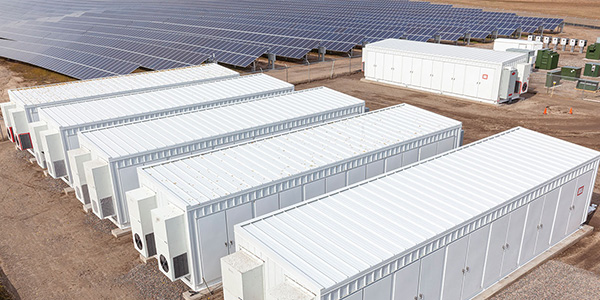MISO’s participation model for electric storage resources needs a final edit before FERC declares the grid operator fully compliant with Order 841, the commission said this week.
FERC on Monday ordered MISO to remove or defend its requirement that distribution utilities and load-serving entities report real-time grid injections and withdrawals. FERC said MISO couldn’t impose reporting obligations on distribution utilities or LSEs because those companies aren’t party to its new pro forma storage participation agreement. FERC said MISO might require data reporting from companies that might not have “any relationship” with the grid operator (ER19-465).
“This reporting requirement is also unnecessary because MISO proposes to require the electric storage resource to report the same information,” the commission said.
FERC said it otherwise approved of MISO’s plan to make market participants responsible for meter installation, ownership, meter-data quality and “periodic testing of metering and related equipment.” The commission also found no problem with MISO’s requirement that storage owners report hourly real-time injections and withdrawal volumes at commercial pricing nodes or to estimate hourly injections and withdrawals if the energy storage resources don’t have a meter at a node.
FERC in November found that MISO’s model largely complied with Order 841 but lacked detail about metering and accounting practices for distribution-connected and behind-the-meter ESRs. (See Storage Plans Clear FERC with Conditions.)
FERC’s latest order, however, rejected a group of Midwestern transmission-dependent utilities’ ask that MISO’s new pro forma agreement not be applicable to ESRs with on-site generation.
“Order No. 841 defines an ‘electric storage resource’ as a resource that can receive energy from the grid and store it for later injection back onto the grid. This definition does not specifically include or exclude, or otherwise discuss, electric storage resources that have on-site generation,” FERC said.
The commission also declined the Midwestern group’s request that it order MISO to make storage resources pay the Multi-Value Project (MVP) transmission charge. The charge funds the grid operator’s 2011 MVP transmission expansion portfolio and is allocated on a load-ratio basis to wholesale energy purchases. FERC agreed with MISO that storage resources should be exempted from the charge “because they do not consume energy as an end-use.”
“Even if the Tariff language and rate structure that existed prior to Order No. 841 allowed the assessment of the MVP charge to [ESRs] based on their monthly net actual energy withdrawals in a manner analogous to load, [ESRs] would still largely avoid the MVP charge because their withdrawals from charging would be mostly offset or netted by their discharging injections,” the commission wrote.
Finally, FERC accepted MISO’s explanation that ESRs should be excluded from qualifying as fast-start resources. The ISO said storage resources, as “offline energy-limited resources,” would “depress prices because they may be less feasible and less available due to state-of-charge management by the market participant.”
MISO has until mid-2022 to implement its ESR participation plan, as it will first have to build a new market platform.




